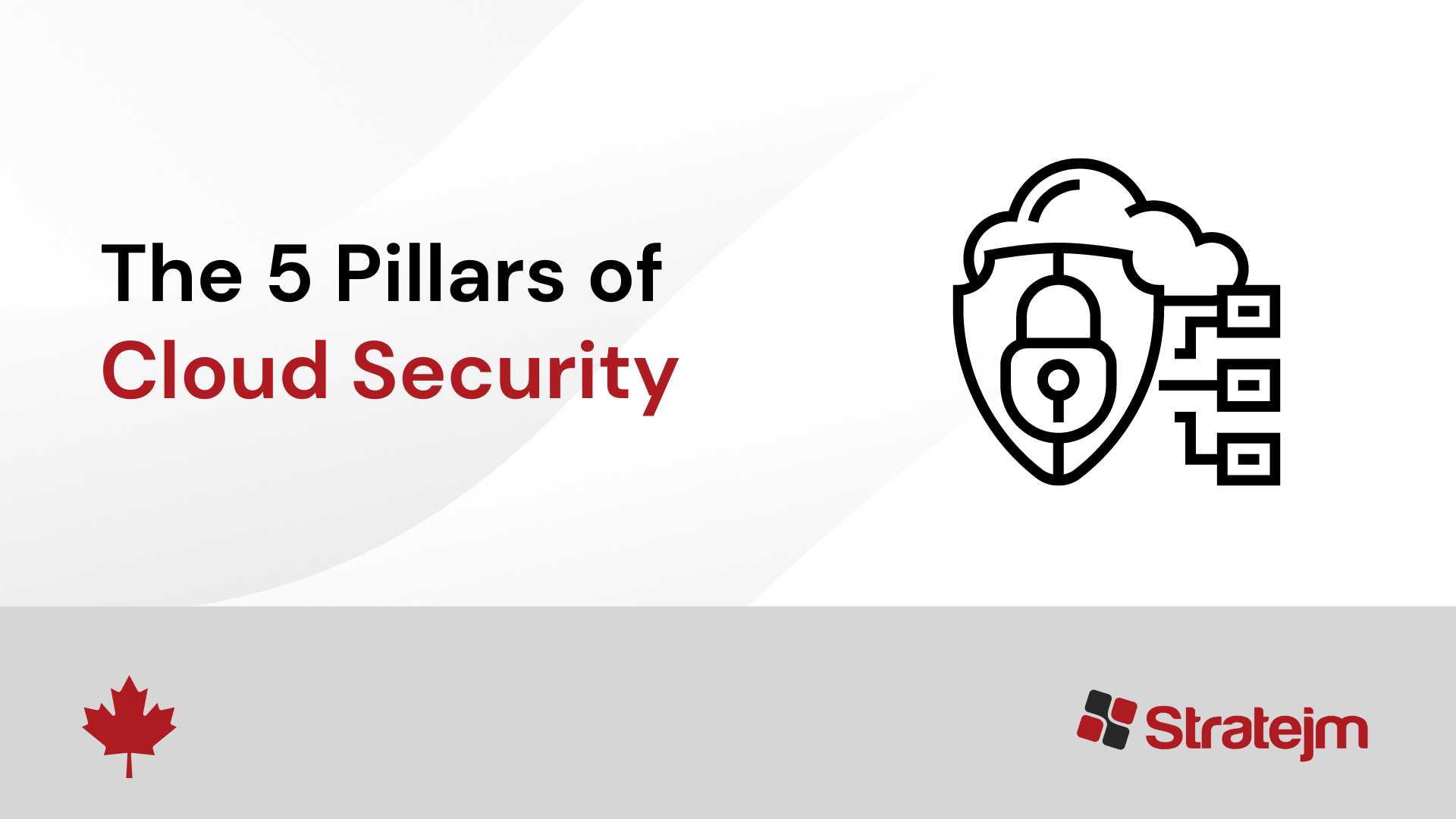
The Five Pillars of Cloud Security
With more and more people shifting toward remote work – companies have begun to rely more on cloud providers as a result. Over the pandemic, we have seen it become a key component for many businesses, with 94% now using at least one cloud service.
However, despite the fact that many companies have migrated over to the cloud, many are failing to adequately protect the sensitive data that resides within these environments. In fact, 40% of all companies suffered a cloud data breach in 2021 , with victims spanning from small businesses to large multinationals like Yahoo and Accenture.
This begs the question – How should organizations adapt their security policies to address the new challenges posed by the cloud?
Unfortunately, like many other cybersecurity problems, there is no single answer that can solve all your cloud-related issues. However, there are a few key things you can keep in mind when creating a strategy that can help.
Here are some of the major things to keep in mind for your cloud security program
What are the Major Security Risks in the Cloud?
Cloud security is more complex than simply applying on-prem techniques and methodology to a cloud environment – Organizations need to understand their responsibilities for cloud security, the unique security strategies that come with the cloud, and the steps they should take to ensure they have the most secure environment possible.
Increased Threat Surface
As more and more organizations rely on public cloud infrastructure, more and more sensitive data can be found residing in these environments. This has naturally made cloud networks a very attractive target for cybercriminals.
As a result, organizations that fail to do their due diligence when it comes to their cloud security often end up exposed and finding themselves the victim of a data breach.
Lack of Control over Cloud Host Security Services
In many cloud security agreements, routine tasks like maintenance, upgrades and even security are often taken care of by the cloud provider.
While this can be a benefit, this also means that you are limited in your ability to supervise and exercise control over how security is orchestrated and managed.
Weak or Inconsistent Access Management
Organizations that rush into cloud adoption without doing proper planning often end up in situations where most users have access far beyond what they need to do their job. This increases the severity of internal security risks – A criminal that breaches your network will have access to everything.
Inconsistent Security in Complex Environments
Not all organizations choose a full migration to the cloud – there are many organizations that use hybrid or multi-cloud solutions.
This often leads to an inconsistent application of security protocols which can leave an organization open to a cyber attack.
Five Key Requirements for Effective Cloud Security
Know your Responsibilities
With the way many cloud service agreements are structured, it can be easy to assume that a vendor or provider has full responsibility for the security of your cloud environment. However, this is usually not the case – most cloud providers follow a shared responsibility cloud paradigm meaning your security responsibilities will vary depending on the services you employ and the degree to which you’ve transitioned services to the cloud.
With this in mind, knowing what you are responsible for securing is the first step toward an effective cloud security strategy. Make sure to pay close attention to the levels of responsibility laid out in the agreement from your cloud service provider.
Create and Implement Dedicated Security Policies for the Cloud
The cloud is a vast and complex environment that requires dedicated security policies for securing it. Organizations must therefore be diligent about adopting effective security policies that are tailor suited for their environments.
Organizations should pay close attention to principles like security-by-design and privacy-by-design to craft a solid framework for their program.
Pay Close Attention to Configurations
You might be surprised to learn that the primary cause of cloud data breaches are related to cloud service misconfigurations – In fact, an estimated 65-70% of all cloud data breaches stem from misconfigurations.
Here are some common misconfigurations to keep in mind:
- Leaving inbound and outbound ports open – Companies have a tendency to leave more ports open than necessary, leaving their data vulnerable to cyber attackers
- Failure to manage ICMP – Companies can often neglect to monitor ICMP which creates a critical attack vector that is easily exploitable by cybercriminals
- Poor IAM Controls
- Poor API management, security and documentation – Neglecting to manage and document the APIs in your system can create blindspots in your network that leave you vulnerable to exploit
Ensure Secure Access Controls
All too often companies rush into cloud migrations and end up providing far too much access to members of the organization that do not need it. Failing to proactively restrict access to sensitive data can be a fatal flaw in cloud security programs.
Corporate security policies should therefore focus on restrictive user access to the level that is necessary for their role. Proper identity and access management can help a great deal in this regard.
Additionally, applying modern authentication methods like 2FA can also apply an additional layer of protection and can help protect data.
Continuous Monitoring
After painstakingly putting into place an effective cloud security policy, it is critical that you keep a close eye on security tools and controls to ensure that they are working properly. Make sure to keep a close eye on network traffic for any indications of potential threats or problems.
Need Help with Cloud Security? Stratejm can Help
At Stratejm, we’ve been securing complex network environments for some of Canada’s most successful enterprises for over 7+ years. We were one of the first to apply security controls to the cloud when we brought managed SIEM to the cloud.
Contact us today to find out how we can help secure your cloud environment.

